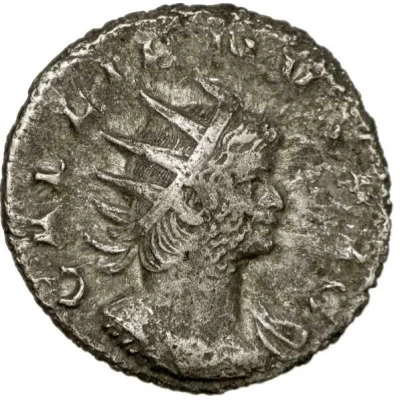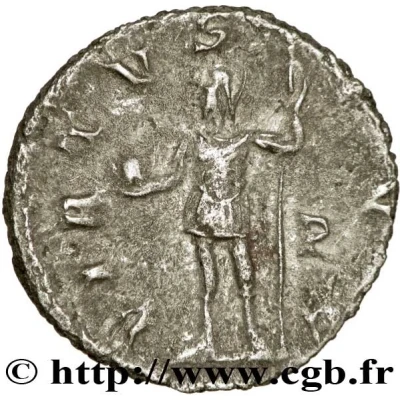


© CGB
Antoninianus - Gallienus VIRTVS AVG
| Billon (.150 silver) | 3 g | 19 mm |
| Issuer | Rome › Roman Empire (27 BC - 395 AD) |
|---|---|
| Emperor | Gallienus (Publius Licinius Egnatius Gallienus) (253-268) |
| Type | Standard circulation coin |
| Years | 260-268 |
| Value | Antoninianus (1) |
| Currency | Antoninianus, Reform of Caracalla (AD 215 – 301) |
| Composition | Billon (.150 silver) |
| Weight | 3 g |
| Diameter | 19 mm |
| Shape | Round (irregular) |
| Technique | Hammered |
| Orientation | Coin alignment ↑↓ |
| Demonetized | Yes |
| Updated | 2024-10-05 |
| Numista | N#48056 |
|---|---|
| Rarity index | 79% |
Reverse
Mars standing left, holding globe in right hand and spear in left hand, sometime foot on helmet
P in right field or P in left field or Q in right field
Script: Latin
Lettering:
VIRTVS AVG
P
Edge
Plain
Comment
Note the obverse legend is sometimes retrograde.Interesting fact
The Antoninianus, also known as the "Gallienus," was a coin introduced by the Roman Emperor Gallienus in 260 AD, during a time of economic crisis and military conflict. It was made of billon, a silver-like alloy composed of 15% silver and 85% copper, and weighed 3 grams. Despite its relatively low silver content, the coin was still considered a standard circulation coin and was widely used throughout the Roman Empire. Interestingly, the coin's design featured the image of Gallienus himself, with the inscription "VIRTVS AVG" (Virtus Augusti), which translates to "The Virtue of the Emperor." This was a departure from previous Roman coins, which typically featured images of gods or goddesses. The use of Gallienus' image on the coin was seen as a way to promote his leadership and reinforce his authority during a time of political instability.